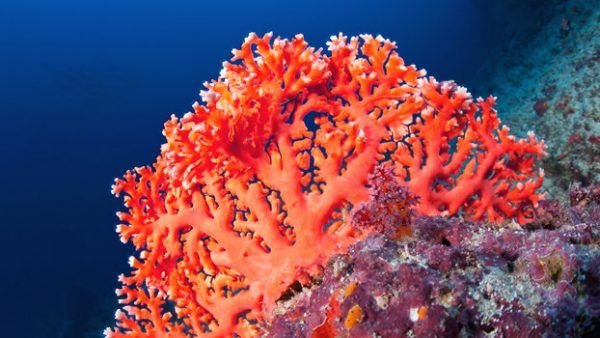Save the Corals reefs are some of the most diverse and valuable ecosystems on Earth, providing shelter for marine life, protecting coastlines, and supporting tourism and fishing industries. However, they are under increasing threat from climate change, pollution, overfishing, and unsustainable human practices. Participating in coral conservation efforts is critical to preserving these vital ecosystems. Whether you live near the coast or far inland, there are many ways to contribute to coral conservation. Below are practical steps you can take to get involved.
1. Learn About Coral Reefs and Their Importance
The first step in participating in Save the Corals conservation is to educate yourself about coral reefs and the threats they face. Understanding the significance of coral ecosystems and the challenges they are up against can inspire you to take action and spread awareness.
How to Get Educated on Coral Reefs:
– Read books, watch documentaries, and follow reputable websites to learn about coral reefs, marine biodiversity, and conservation efforts.
– Attend webinars, workshops, and public talks on ocean conservation hosted by environmental organizations or academic institutions.
– Follow conservation organizations like the Save the Corals Restoration Foundation, Reef Check, or The Ocean Agency on social media for updates and educational content.
2. Support Coral-Friendly Practices
You can make a difference by adopting environmentally responsible behaviors in your daily life. Supporting coral-friendly practices can reduce your negative impact on the environment, helping to protect coral reefs even if you don’t live near the ocean.
Steps to Adopt Coral-Friendly Practices:
– Reduce Plastic Use: Avoid single-use plastics, recycle, and participate in or organize cleanups in your local community. Plastic waste can make its way into the ocean and harm marine life, including coral reefs.
– Choose Sustainable Seafood: Overfishing harms marine ecosystems, including coral reefs. Choose seafood that is sustainably sourced and avoid species that are overfished.
– Use Reef-Safe Sunscreen: Traditional sunscreens contain chemicals like oxybenzone and octinoxate that harm coral reefs. Opt for reef-safe sunscreens with natural ingredients like zinc oxide or titanium dioxide.
– Limit Carbon Footprint: Climate change is one of the greatest threats to coral reefs, causing coral bleaching. Reduce your carbon footprint by conserving energy, driving less, and supporting renewable energy sources.
3. Volunteer with Coral Conservation Organizations
Many non-profit organizations work to protect coral reefs and often rely on volunteers to carry out their mission. Volunteering allows you to contribute directly to conservation efforts, whether through hands-on activities or advocacy work.
How to Get Involved as a Volunteer:
– Join Coral Reef Monitoring Programs: Organizations like Reef Check and The Coral Restoration Foundation offer opportunities for volunteers to help monitor reef health, collect data, and participate in restoration projects.
– Assist in Coral Nurseries: Some coral conservation groups run coral nurseries, where corals are grown before being transplanted back to reefs. Volunteers can help maintain nurseries and assist in transplanting efforts.
– Beach Cleanups: Regular beach cleanups prevent debris, particularly plastic waste, from entering the ocean and damaging coral reefs. You can participate in or organize local cleanup events.
– Advocacy and Education: Help raise awareness about coral conservation by giving presentations at schools, organizing community events, or distributing educational materials.
4. Participate in Citizen Science Projects
Citizen science involves the public in collecting data and contributing to scientific research. Save the Corals conservation efforts often include citizen science programs where participants collect important information about coral reefs, which can be used to track changes and guide conservation strategies.
How to Contribute as a Citizen Scientist:
– Join CoralWatch: CoralWatch is a global citizen science project that allows participants to monitor coral health. By measuring coral color changes, you can provide data that helps track coral bleaching events.
– Use Apps and Tools: Participate in coral surveys by using tools like the Eye on the Reef app, which allows divers and snorkelers to report sightings of coral bleaching, disease, and invasive species.
– Participate in Reef Health Surveys: Volunteers can join organized reef health surveys, where they learn how to assess coral reefs and collect data on species diversity and reef conditions.
5. Donate to Coral Conservation Organizations
Financial support is crucial to the success of coral conservation efforts. Donations help fund restoration projects, research initiatives, and education campaigns. Even small contributions can have a big impact when combined with the efforts of others.
How to Choose Where to Donate:
– Research Organizations: Look for reputable non-profits that focus on coral conservation, marine biodiversity, or ocean health. Some well-known organizations include the Coral Restoration Foundation, The Ocean Conservancy, and Mission Blue.
– Support Specific Projects: Some organizations allow you to donate directly to specific projects, such as coral nurseries, reef restoration, or educational outreach.
– Crowdfunding Campaigns: Occasionally, grassroots conservation projects will use crowdfunding platforms to raise money for urgent coral restoration or awareness initiatives.
6. Reduce Water Pollution
One of the main threats to coral reefs is water pollution from runoff, sewage, and chemicals. Even if you live far from the coast, your actions can impact coral reefs downstream. Reducing pollution in your community can help protect coral ecosystems.
How to Reduce Water Pollution:
– Use Eco-Friendly Products: Choose biodegradable and non-toxic cleaning products and avoid chemicals that can end up in waterways.
– Dispose of Waste Properly: Never pour chemicals, paint, or medications down the drain. Use proper waste disposal services to prevent contaminants from entering rivers and oceans.
– Minimize Fertilizer Use: Fertilizers contribute to nutrient pollution, which can cause harmful algae blooms that smother coral reefs. Use organic alternatives or reduce the amount of fertilizer in your garden.
7. Advocate for Marine Protected Areas (MPAs)
Marine Protected Areas (MPAs) are designated zones in the ocean where human activity is restricted to protect ecosystems, including coral reefs. By advocating for the establishment and expansion of MPAs, you can help ensure that coral reefs are preserved for future generations.
How to Advocate for MPAs:
– Sign Petitions: Many conservation organizations circulate petitions calling for the creation or expansion of MPAs. Add your voice to these campaigns by signing and sharing petitions.
– Write to Policymakers: Reach out to local, regional, and national representatives to express your support for coral reef protection and the creation of MPAs.
– Support Existing MPAs: If you live near or visit an MPA, respect its rules and regulations. Encourage others to do the same by promoting responsible tourism and sustainable practices.
8. Become a Responsible Tourist
Tourism, particularly in tropical regions, can have both positive and negative impacts on coral reefs. As a tourist, you can play a role in coral conservation by making sustainable travel choices that minimize harm to coral ecosystems.
How to Be a Responsible Tourist:
– Choose Eco-Friendly Tour Operators: Look for tour operators that follow responsible tourism practices, such as using eco-friendly boats, minimizing waste, and educating guests on coral conservation.
– Follow Responsible Snorkeling and Diving Guidelines: If you snorkel or dive near coral reefs, avoid touching or standing on coral, wear reef-safe sunscreen, and respect marine life.
– Support Local Conservation Efforts: When visiting coastal areas, participate in local conservation initiatives such as beach cleanups or coral restoration projects.
9. Engage in Coral Gardening
Save the Corals gardening is an exciting way to actively participate in reef restoration. Coral fragments are grown in nurseries and later transplanted to damaged reefs to help restore them. Many organizations offer coral gardening programs for volunteers.
How Coral Gardening Works:
– Join a Coral Gardening Program: Some conservation organizations, such as the Coral Restoration Foundation, offer hands-on opportunities for individuals to help with coral gardening and reef restoration.
– Assist in Coral Transplanting: Volunteers can help plant coral fragments onto degraded reefs, contributing directly to restoration efforts.
– Monitor Coral Growth: After planting coral, volunteers assist in monitoring coral growth and reef health to ensure successful restoration.
10. Support Research and Innovation
Scientific research plays a key role in advancing coral conservation. By supporting research and innovation, you can contribute to the development of new techniques for restoring and protecting coral reefs.
How to Support Coral Research:
– Donate to Research Institutions: Many universities and research institutions conduct vital studies on coral ecosystems, climate change impacts, and restoration methods. Donations can help fund critical research.
– Stay Informed on Advances: Follow scientific developments in coral conservation and share new findings with your community to raise awareness.
– Promote Research-Based Solutions: Advocate for policies and initiatives that are informed by science and support coral conservation.
Conclusion
Participating in Save the Corals conservation efforts is an impactful way to help protect one of the planet’s most important ecosystems. Whether through education, volunteering, sustainable living, or financial support, there are numerous ways for individuals to make a difference. By taking these steps, you not only contribute to the preservation of coral reefs but also promote the health of the oceans and the countless species that depend on them. Coral conservation is a shared responsibility, and your efforts can have a lasting impact on the future of marine biodiversity.



